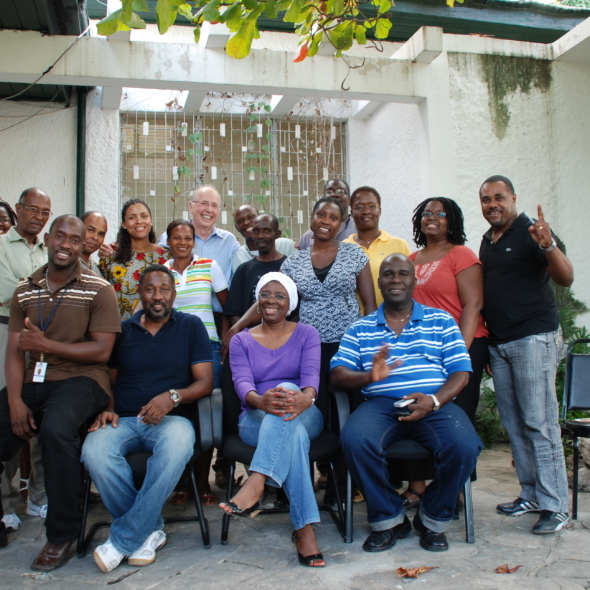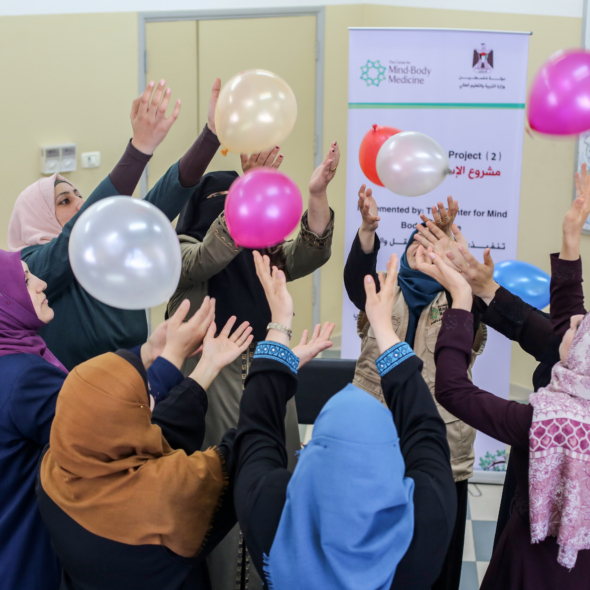Day 2 in Haiti, Feb. 12, 2010
Dear Friends,
In Haiti three days of “memorializing the dead,” of prayer and fasting have begun.
We drive downtown, past blocks where some houses are still erect and others down, victims we are told of neglected building codes, and others where everything is flattened like discarded, half-eaten sandwiches; fragments of concrete and stone and dust are everywhere. S.O.S. signs are chalked on walls. We pass open air congregations, gathered like human lakes in front and on the sides of tent encampments, several hundred people here a few thousand there, listening to sermons in Creole, raising their voices in song. On the radio one preacher exhorts his listeners to ask God’s forgiveness for drinking, smoking and going to voodoo priests. Requiems for the dead are broadcast, and reminders of God’s power to see and do all, to help us go, and live beyond death.
We park at the Champs du Mars. A hundred thousand people are here, or more, it is hard to tell. They fill an amphitheater where the speakers stand, flood across fields and roads, flow among the thousands of tents that have been set up, sit in the trees overhead. The Haitian people, we are told, are like those who were with Joshua at Jericho: They have no weapons but God will save them. The messages from the Haitian President as well as the preachers, are similar – have strength, have faith; we will work together for the future. Men, women and children, most in tee shirts and loose blouses, some in surprisingly neat even stylish clothes, sing and raise their arms ( a few extending bibles upward) to praise God and shout “Hallelujah”. The mood is somber and suffused with determination, but also celebratory. “We are,” one lean fortyish man with dreadlocks tells me, holding my hand and looking at me with urgent fellow feeling, “here to give thanks to God, to rejoice for our brothers and sisters who have perished, to love one another.” Drums begin to play and a breeze, as if summoned by them, blows through the noon heat. We are all clapping and dancing now. None of the Haitians,needing to remain strong, seems to be crying, though sorrow rises like steam from their bodies; tears come to Star’s eyes and mine.
Afterwards we stop at the Cathedral. A nearby music school has disappeared, its students dying with it. The Cathedral, once one of the city’s glories, is a skeleton, its only note of celebration bright bougainvillea in what was once a garden. You can see through the great building now, from one side of the transept to the other, from the porch at the back through the nave to the chancel at the front. Across the street people too injured or tired or dispirited to attend services that require standing are camped in rubble against a wall, a few possessions piled around them, burlap for bedding. At the head of one’s pallet is an astonishing sign of faith and hope, taped to the wall: a picture of the risen Christ, emerging from a blue sky, returning victorious to earth.
Jim


